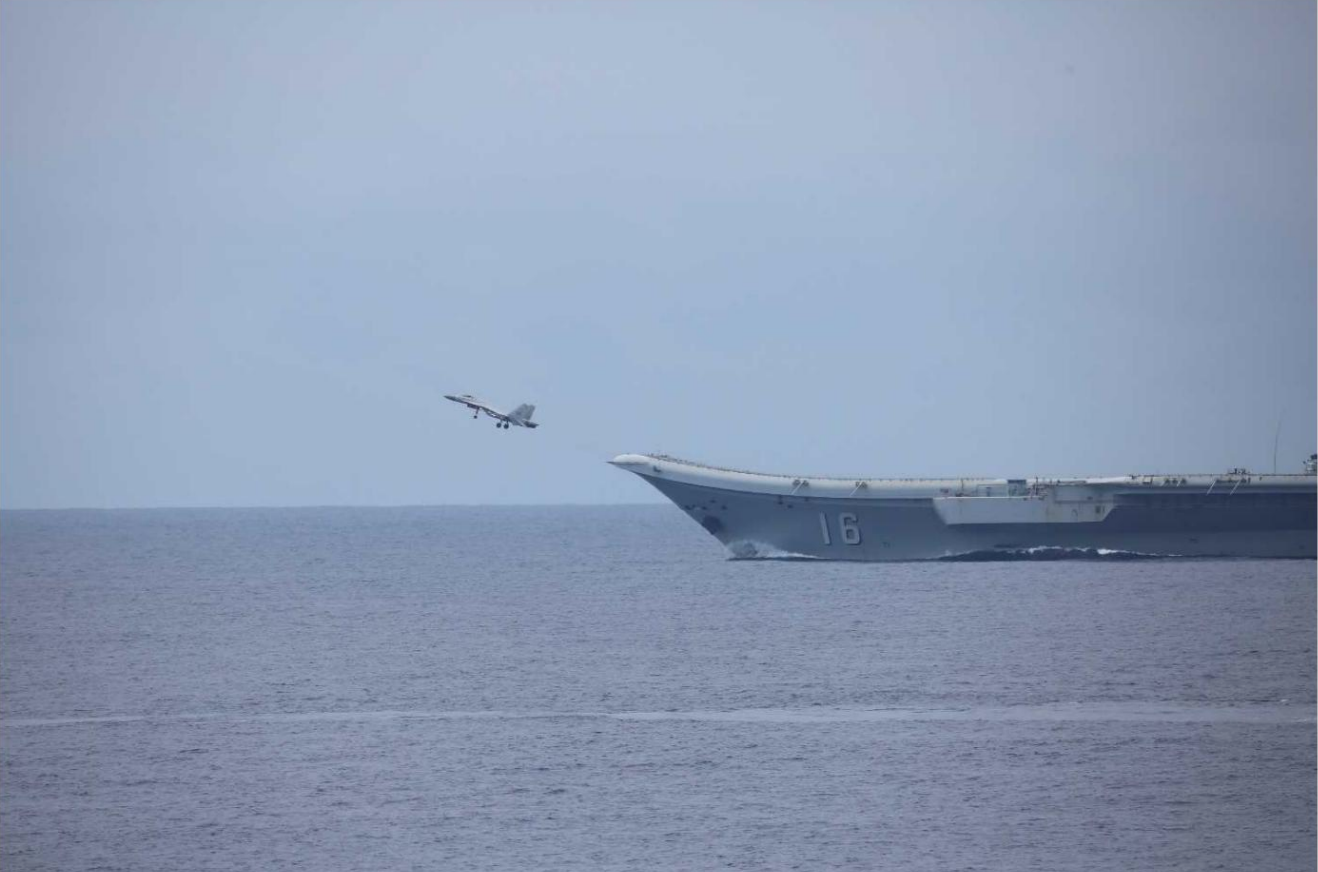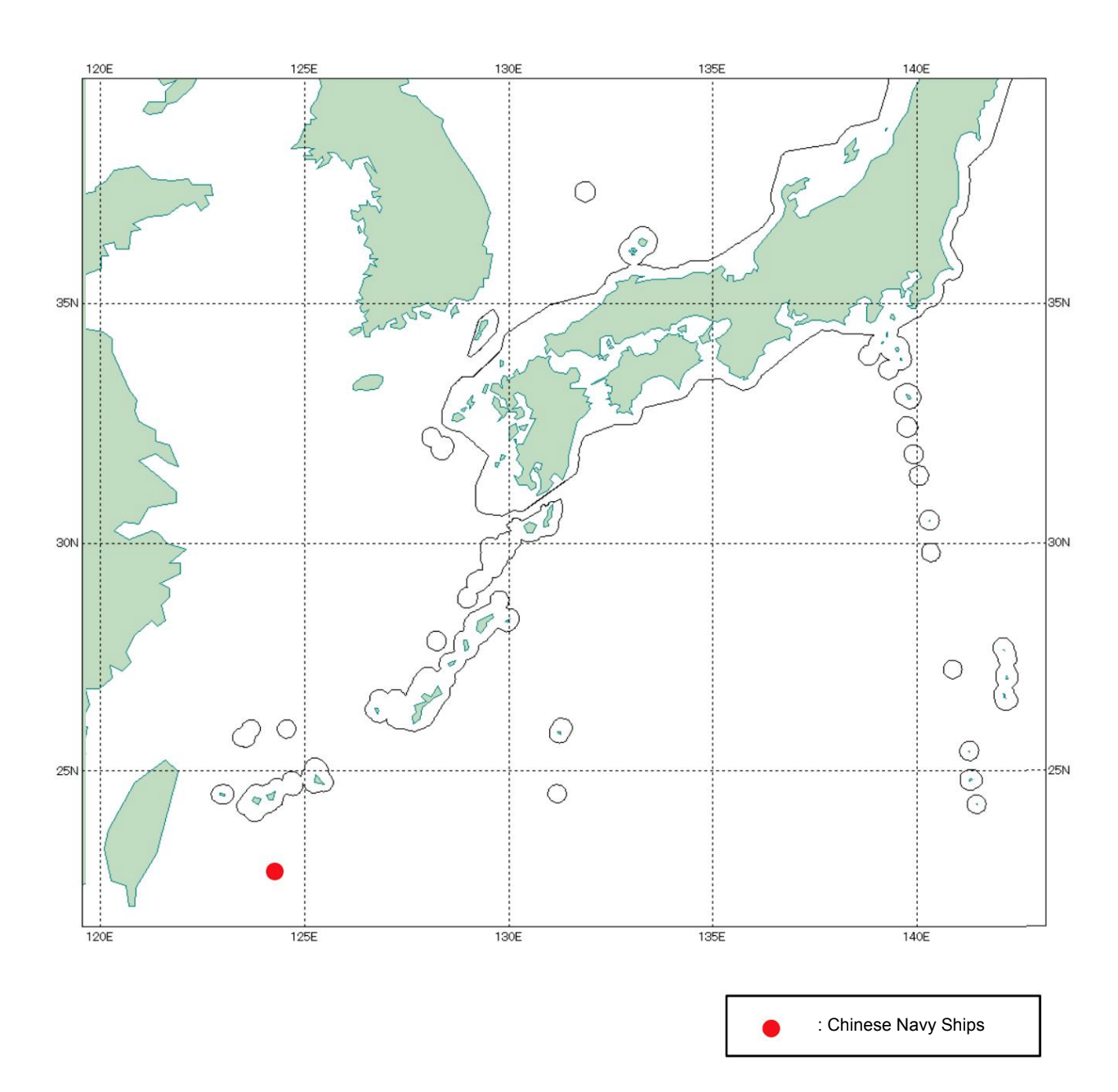
China’s aircraft carrier CNS Liaoning (16) has been launching fighters near Japan since last week all the while being shadowed by the Japan Maritime Self-Defense Force destroyer helicopter carrier JS Izumo (DDH-183), according to Japanese forces.Liaoning, together with the Type 055 destroyer CNS Nanchang (101), Type 052D destroyers CNS Xining (117), CNS Urumqi (118) and CNS Chengdu (120), Type 052C destroyer CNS Zhengzhou (151), Type 054A frigate CNS Xiangtan (531) and Type 901 fast combat support ship CNS Hulunhu (901), sailed into the Pacific Ocean via the Miyako Strait on May 2.
Chinese officials said the Liaoning Carrier Strike Group was training in the western Pacific Ocean and that it was a routine training event organized by the Chinese navy, according to its annual plan and in line with relevant international law and international practice, and not targeting any party.
The JSO has issued daily releases on the PLAN carrier group activities since May 4. The Japanese say Liaoning, along with destroyers Xining, Urumqi, Chengdu, Zhengzhou, frigate Xiangtan and combat support ship Hulunhu were sighted at noon on May 3 sailing around 160 km southwest of Oki Daito island, and flight operations of embarked J-15 fighters and Z-18 helicopters had been carried out from noon until 6 p.m. Liaoning together with destroyers Nanchang, Xining, Urumqi and Chengdu were then seen at noon on May 4 sailing around 230km Southwest of Okinawa. Flight operations were carried out from noon until 6 p.m. that day.
On May 5, Liaoning sailed with destroyers Nanchang, Xining, Urumqi and Chengdu and combat support ship Hulunhu 320 km southeast of Miyako Island, and flight operations were conducted from 2-8 p.m.

The six ships sailed 170 km south of Ishigaki Island at 9 a.m May 6 with flight operations from 9 a.m. to 9 p.m. On Saturday, Liaoning was sighted with two of the Type 052D destroyers and Hulunhu 150km south of Ishigaki Island at 9 a.m. with flight operations carried out from 9 a.m. to 7 p.m.
The Japan Air Self Defense Force (JASDF) fighter aircraft scrambled in response to the launches of the J-15s.
In December last year, the Liaoning, along with other PLAN ships, conducted flight operations in the vicinities of Kita Daito and Oki Daito islands in the Pacific Ocean.
While these activities are permissible under international norms, the Japanese government have raised concerns about the proximity of the activities in Pacific to Japan, as well as North Korea’s launch of ballistic missiles and the Russian and Chinese separate and joint naval and air activities near the country.
The Japanese government plans to increase its military capabilities as part of its response to increased concerns.
The Russian Pacific Fleet announced //when?// that the corvette RFS Gremyashchy (337) carried out a successful firing of the Otvet anti-submarine missile system at an underwater training target in the Sea of Japan. The Russians deployed 15 other ships to support the firing.

Moscow has been holding a number of live firing from the Sea of Japan in recent months, the last being on April 14 where submarines RFS Petropavlovsk-Kamchatsky (B-274) and RFS Volkhov 3M14K Calibre (SS-N-30A) cruise missiles (B-603)
Japanese Defense Minister Nobuo Kishi and U.S Secretary of Defense Lloyd Austin held a meeting at the Pentagon on May 4 where both defense chiefs reaffirmed their commitment to a free and open Indo-Pacific and pledged to promote the norms, values, and institutions that underpin the rules-based international order, according to a statement released by the Japan Defense Ministry.
Austin and Kishi discussed China’s behavior in the Indo-Pacific region and its coercive actions in the East and South China Seas. They both affirmed that that any change to the status quo by force in the Indo-Pacific region cannot be condoned, and that both countries would continue to strengthen cooperation to deter and, if necessary, respond to such actions.
Austin affirmed that the Senkaku Islands are under the administration of Japan, and that Article V of the Japan-U.S. Security Treaty applies to the Senkaku Islands. Austin also expressed his opposition to any unilateral attempts to undermine the administration of Japan. Both defense chiefs also reiterated the importance of peace and stability of the Taiwan Strait.
Along with condemning Russia’s aggression towards Ukraine, both leaders stated that the U.S and Japan will work together to support Ukraine as much as possible. Austin and Kishi agreed that North Korea’s repeated missile launches and nuclear development are a serious threat against peace and stability of the region and the international community, and that such actions cannot be tolerated. Both pledged to advance close bilateral and trilateral cooperation among Japan, the United States, and the Republic of Korea in response to North Korean provocations.





